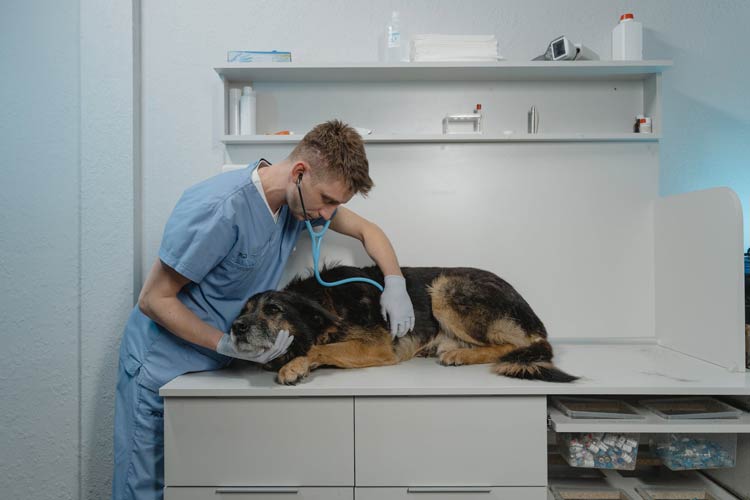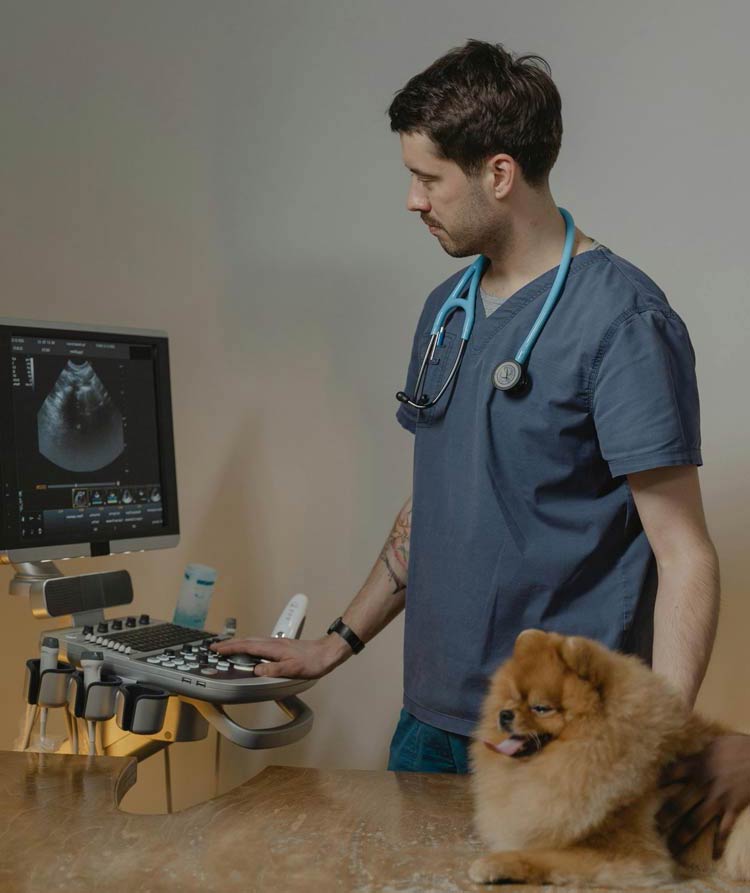Veterinary Education in the US: All You Need to Know
Veterinarians are very important when it comes to health care. As the guardians of animal health, vets are very important to society. Behind every skilled veterinarian is a strong base that they built while they were learning. Let’s take a deep look at the wide world of veterinary schools in the US.
History of Veterinary Education in the US
Veterinary education in the US has a rich history, evolving significantly over the years. From humble beginnings to sophisticated programs, the journey reflects the increasing importance placed on animal health. Milestones such as the establishment of the first veterinary school underscore the commitment to excellence in this field.

Tasks in Veterinarian College
Tasks in veterinarian college are diverse, demanding a multifaceted skill set from students. From intricate surgical procedures to comprehensive research projects, the challenges are manifold. Among these tasks, the essay stands out as a crucial element, requiring students to articulate their knowledge effectively.
Recognizing the complexities, essay writing help from highly-qualified writers at Papersowl plays a pivotal role in getting you ready for writing challenges. These professionals, adept at addressing the unique demands of veterinary education, ensure that students approach essay tasks with both academic rigor and expressive finesse. The importance of essay writing extends beyond academic assessments; it cultivates essential skills such as analytical thinking, creativity, and the capacity to convey ideas persuasively. In essence, essays contribute significantly to students’ overall intellectual development, preparing them for the challenges they’ll face both academically and in their future careers.
Educational Requirements for Aspiring Veterinarians
In the US, veterinary education has a long past and has changed a lot over the years. From simple starts to complex programs, history shows how animal health is becoming more and more important. The dedication to success in this field is shown by important events like the opening of the first veterinary school.
the educational requirements for aspiring veterinarians in the United States typically involve a combination of undergraduate and professional veterinary education. Here are the key components:
- Bachelor’s Degree:
- Aspiring veterinarians usually need a bachelor’s degree before applying to a Doctor of Veterinary Medicine (DVM) program.
- The bachelor’s degree should include specific prerequisite coursework in subjects such as biology, chemistry, physics, mathematics, and other related disciplines.
- Prerequisite Coursework:
- Common prerequisite courses may include biology (with labs), general chemistry, organic chemistry, physics, biochemistry, mathematics (often statistics or calculus), and English composition.
- Requirements may vary slightly among veterinary schools, so it’s essential to check the specific prerequisites of the institutions you plan to apply to.
- Veterinary College Admission Test (VCAT):
- Many veterinary schools require applicants to take the Veterinary College Admission Test (VCAT). This standardized test assesses an applicant’s abilities in biological and physical sciences, as well as verbal reasoning and quantitative reasoning.
- Extracurricular and Animal Experience:
- Veterinary schools often look for applicants who have gained practical experience with animals. This can include volunteering or working in veterinary clinics, animal shelters, farms, or research laboratories.
- Letters of Recommendation:
- Applicants are usually required to submit letters of recommendation as part of the application process. These letters typically come from professors, veterinarians, or other professionals who can speak to the applicant’s qualifications.
- Application to DVM Program:
- Once the prerequisites are met, aspiring veterinarians apply to a DVM program. Admission to veterinary school is competitive, and schools may consider factors such as academic performance, experience with animals, and letters of recommendation.
- Doctor of Veterinary Medicine (DVM) Program:
- The DVM program is a four-year professional degree program that provides comprehensive training in veterinary medicine.
- The curriculum includes a combination of classroom instruction, laboratory work, and hands-on clinical experience through rotations in various veterinary specialties.
- Licensing Examination:
- After completing the DVM program, graduates must pass the North American Veterinary Licensing Examination (NAVLE) to become licensed veterinarians.
- Optional Postgraduate Education or Specialization:
- Some veterinarians choose to pursue postgraduate education, internships, or residency programs to specialize in a particular field of veterinary medicine.
Example Dimensions:
- Duration of DVM Program: 4 years
- Prerequisite Coursework: Bachelor’s degree with specific courses
- VCAT Score Range: Varies by school
- Veterinary School Acceptance Rate: Varies by school

Accredited Veterinary Schools in the US
A list of veterinary schools in the United States that are accredited by the American Veterinary Medical Association (AVMA).
- Cornell University College of Veterinary Medicine – Ithaca, New York
- Iowa State University College of Veterinary Medicine – Ames, Iowa
- Kansas State University College of Veterinary Medicine – Manhattan, Kansas
- Michigan State University College of Veterinary Medicine – East Lansing, Michigan
- North Carolina State University College of Veterinary Medicine – Raleigh, North Carolina
- Ohio State University College of Veterinary Medicine – Columbus, Ohio
- Oklahoma State University Center for Veterinary Health Sciences – Stillwater, Oklahoma
- Oregon State University Carlson College of Veterinary Medicine – Corvallis, Oregon
- Purdue University College of Veterinary Medicine – West Lafayette, Indiana
- Texas A&M University College of Veterinary Medicine & Biomedical Sciences – College Station, Texas
- Tufts University Cummings School of Veterinary Medicine – North Grafton, Massachusetts
- Tuskegee University College of Veterinary Medicine – Tuskegee, Alabama
- University of California, Davis School of Veterinary Medicine – Davis, California
- University of Florida College of Veterinary Medicine – Gainesville, Florida
- University of Georgia College of Veterinary Medicine – Athens, Georgia
- University of Illinois College of Veterinary Medicine – Urbana-Champaign, Illinois
- University of Minnesota College of Veterinary Medicine – St. Paul, Minnesota
- University of Missouri College of Veterinary Medicine – Columbia, Missouri
- University of Pennsylvania School of Veterinary Medicine – Philadelphia, Pennsylvania
- University of Tennessee College of Veterinary Medicine – Knoxville, Tennessee
- University of Wisconsin School of Veterinary Medicine – Madison, Wisconsin
- Virginia-Maryland College of Veterinary Medicine – Blacksburg, Virginia
Admission Process and Tips
Picking the right school is very important for a veterinarian’s job. This article talks about accredited veterinary schools, putting light on trustworthy schools and comparing their programs. This information helps people who want to go to college make smart choices.

Curriculum Overview
It’s hard to get into veterinary school. This part breaks down the complicated admissions process and gives helpful advice to people who want to go to college. Find out the keys to getting into veterinary school, from doing well in school to using good methods.
Challenges and Opportunities in Veterinary Education
Veterinary schools teach more than just what is taught in textbooks. Students are ready for the changing challenges in the field because they learn core topics, specialized areas, and a lot of practical skills.
Technological Integration in Veterinary Education
Technology changes have changed the way we learn, and veterinary schools are no different. Explore how technology improves the learning process for people who want to become vets, from simulations to virtual learning.
Financial Considerations for Veterinary Students
There are financial things to think about when starting a veterinary school journey. This section talks about tuition fees, other costs, scholarships and other forms of financial help that are available so that people who want to go to college are well-informed.
Internship and Residency Programs
Building a link between school and real-world practice is very important. Look into how important internships and training programs are for giving students experience in the real world.

Career Paths After Veterinary Education
Graduation is not the end of the trip. There are many possible careers for veterinarians. This part talks about possibilities, specializations, and the need for skilled workers in different fields.
International Perspective on Veterinary Education
Veterinary education is easier to understand when you look at it from a world point of view. Compare US standards to those around the world, and look into ways to work together and share information to get a full picture.
The Role of Research in Veterinary Education
Making contributions to science progress is an important part of the field. Explore the part that study plays in veterinary education and learn about the chances it gives students.
Continuing Education for Veterinarians
The search for information doesn’t end with a degree. Look into the idea of continuing education for vets, with a focus on professional growth and learning throughout one’s life to keep up with changes in the field.
Conclusion
In conclusion, veterinary education in the US is an area that is always changing. From wanting to be a student to being a good veterinarian, you have to get through a lot of material, deal with problems, and take advantage of chances. The educational process turns people into skilled workers by focusing on their dedication to the health and happiness of animals.



















